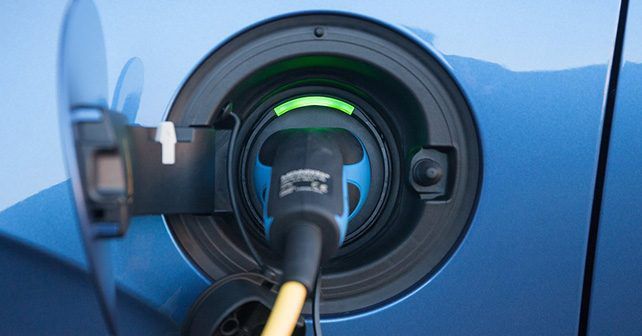
Greenfuel is a leading player in automotive CNG kits in India, and the company now aims to become a major player in the two- and three-wheeler EV space as well.
Greenfuel Energy Solutions is a homegrown company, specialising in energy solutions for sustainable mobility in the domestic market. Founder and Managing Director of Greenfuel Energy Solutions, Akshay Kashyap, is a visionary who was responsible for bringing safe and reliable CNG kits into the Indian car market. And now he intends for Greenfuel to become a leading player in the electric two- and three-wheeler space in the country.
Akshay says that he’s been working on the plan for two years now, in which time the company has been able to develop the ideal lithium-ion battery pack that’s well-suited to our climatic conditions and traffic situations.
So, in this conversation with Akshay, we attempt to get a better understanding of Greenfuel’s new venture.
Tell us about how you started Greenfuel – about the ideology behind its inception?
When I came back to India in late 2004, after finishing my engineering from the US and having worked there for some time, I noticed that there was a gap in market technologies between the US and India in terms of alternative fuel systems for cars. After surveying the market scenario, I realised that this was primarily driven by non-exposure. The field clearly had potential, so we started Greenfuel in October of 2006 with the motive of providing safe high-pressure fuel systems and bringing them up to international standards.
A lot of our ideas were heard at first by Tata Motors, and we ended up developing the first low-floor bus CNG drivelines in India for the Tata Marcopolo. And since then we’ve dominated that market. So, all the green DTC buses in Delhi run on our systems, and I’m happy to say that they’ve covered over a billion kilometres.
Since then we have expanded. We’ve worked with Ashok Leyland and have worked on more models for Tata Motors, including for their Thailand project. We’ve also worked with Swaraj and Volvo Eicher. And, after 2010, Maruti happened, and since then, we’ve been supplying kits to Maruti. Today, we pretty much supply the high-pressure fuel systems for all OEMs who have CNG models, apart from Mahindra. As a result, we have the largest market share in this space at the moment.
And I believe that our success is built on the fact that we understand that this is a responsibility at the end of the day. These are 200bar systems, and when you deal with that kind of pressure you have to have safe and reliable systems. And I feel proud of the fact that we’ve been responsible for changing a lot of specifications within the automotive industry for upgradation of the systems.
So, while that has been the standing pillar of success for Greenfuel Energy Solutions, looking ahead, 2 years ago, we decided to venture into the lithium-ion battery systems. In fact, we’ve been looking at it since 2011. But the timing wasn’t right back then. So, when the time arrived, we set up a division that focused on our own technology battery pack, and we are happy to say that we will launch the product in a couple of months. These battery packs will largely be designed for two-wheelers and three wheelers.
And while there is still a lot of questions about it, the idea is to have the technology for sustainable mobility. Now, historically in India, when it comes to products at this scale, it involves joint ventures. But our idea is to cater to the technology side of things, so that we can focus on this aspect and perhaps even export our technology to cater to the inevitable global demand for sustainable mobility.
Why did you decide to focus on 2 & 3 wheelers?
We choose to target the 2- & 3-wheeler market, as this is where we see maximum penetration happening for electric powertrains at the moment in India. These vehicles primarily use 48-volt systems. Now, what we did with our battery pack is that we engineered it for Indian conditions, and that was a huge challenge because of our high temperature conditions – since lithium-ion batteries are incredibly difficult to operate at high temperatures. The issue results from thermal management, and this severely affects the life of the battery. And so we had to put a lot of effort into the thermal engineering side of things since, unlike liquid cooled battery packs in cars, 2 & 3 wheelers have to make do with air cooling. So, we had to develop a lot of engineering solutions, and that’s why it took us two years to come up with the end product. And I believe, at the end of it, we have come out with a fantastically engineered product.
Have you entered into a contract or an understanding with any OEMs for EV powertrains?
Yes, we are in talks at the moment, as we now have full confidence in the robustness and performance of the product. We have showcased the product, and a lot of people have appreciated the engineering side of it. A lot of start-up OEMs have shown interest as they are pioneering this space as opposed to the established ones, something I had predicted earlier. You see, conventional OEMs will always have a problem balancing a new business model against their existing ones, and it’s a problem which is yet to be solved.
How expensive are these battery packs and what’s their lifespan?
The price depends entirely on the specifications of the product. It can range between Rs. 17,000 to Rs. 28,000. According to its specifications, it gives you a cycle life that depends entirely on its usage. A Rs. 17,000 battery pack will give you a life of less than a thousand cycles. Now, within that, the life span will vary in different types of applications and different usage cycles, so there is no fixed number that we can arrive at. The cycle life is dependent on driving patterns, which is something that is infinitely variable. So, you can only arrive at battery cycle life and cost based on certain assumptions. It’s the same as talking about mileage of a vehicle – it’s valid under certain conditions.
Conventional manufacturers can offer a warranty on the powertrain, as fuel is an external factor. How do you arrive at warranty criterion for your powertrain?
The problem for the consumer in this space is that battery warranty will come with a set of terms and conditions that need to be met for claiming the warranty. Now, this is a big problem for the consumer. So, what do we do? We always take a cycle life, and then we discount it for a certain percentage and say that is the cycle life you will definitely get.
Some OEMs want to understand our product at a deeper level to arrive at warranty criterion, and some of them simply refused to discuss it. But we know they will come back after making observations.
Is there any infrastructure coming up for charging of three-wheelers?
There are two models coming up for three-wheelers, because of the nature of their intensive usage as last mile vehicles. One is the battery swap model, in which somebody owns the asset therefore they are going to expect returns. But there are nuances involved in this model, because an asset lying idle is not giving any returns. So, the business model still needs to be worked on.
In the second model, the OEM supplies the battery along with the vehicle. Now, these three-wheelers have peak times of operation, which is mornings and evening. The afternoon period is the lull phase where the drivers go home or meet at a common point for lunch breaks, etc. If you look at the e-rickshaw model, every afternoon, when the drivers have lunch, there are charge points available in these locations where they charge their e-rickshaw battery. A two-hour charge puts a lithium-ion battery pack back to 80% charge. These batteries can be charged via any 15amp socket. So, you don’t need charging stations for 2 & 3 wheelers, merely a charger is enough.
Has the government given you any facility to dispose or recycle lithium-ion batteries?
There are no global standards for disposing lithium-ion batteries as of now. But there is the concept of a second life battery. Once a battery no longer has the lifecycle to support its intended usage, it can still be used in storage. What this means is that they can be used for solar power storage and the like after vehicular usage. But, as usage is increasing, there are standards being framed for that. There are recycling facilities around the world that are being setup for the purpose. So that will become another industry in itself.
So, while there are no global standards for disposal, people have found alternative usage for the same for the time being. The processes of recycling of lithium-ion batteries is still at a nascent stage, but it is on the radar and solutions will be framed over time.

























Write your Comment